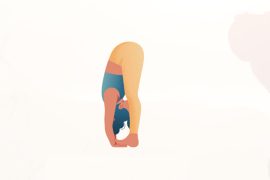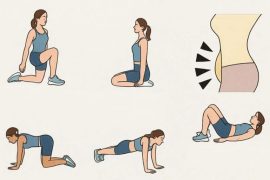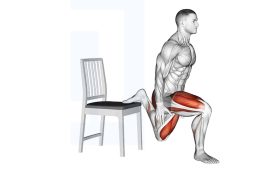Many of us exercise for reasons other than weight loss. Building strength and being healthy may be the goals for many people. There are numerous methods that can assist you in reaching your fitness objectives. Eccentric exercise is one instance of this. This entails reducing weight gradually without losing control. Because it can increase muscular growth and physical strength, it is a well-liked practice in the fitness industry. Additionally, it might increase your heart health and flexibility. You are most likely already performing this workout if you are a fitness enthusiast. It is accessible to people of all fitness levels, so it is not only for gym-goers.
Eccentric exercise:
One strength training method that is frequently employed during exercise is eccentric exercise. According to research published in Nutrition and Enhanced Sports Performance in 2019, it focuses on the active lengthening of muscles under tension. It occurs when you control a movement against resistance or lower a weight, like in the downward portion of a push-up or squat. Slowing down the negative or lowering portion of a movement is the main goal of this kind of workout, which increases control and strength.
What advantages does eccentric exercise offer?
Understand the advantages of eccentric exercise before figuring out how to incorporate it into your workout regimen:
- Strengthened muscles: Strengthening muscles is a big benefit of eccentric exercise. In healthy individuals, it can increase muscle power and strength, per a 2013 study that was published in Sports Medicine. It causes muscle tension, which increases muscle strength.
- Better coordination: “Stability and coordination are improved by controlling the lengthening phase.” This is particularly crucial for everyday tasks or sports where you have to regulate your body in various situations.
- Increased flexibility: Over time, eccentric exercise can reduce stiffness and increase flexibility since the muscles extend while under strain. For instance, increasing hip and hamstring mobility can be achieved by lowering into a deep squat.
- Injury prevention: Eccentric exercise helps to avoid injuries to joints and connective tissues, particularly during high-impact motions, by strengthening muscles and tendons over their whole range of motion.
- Better muscular growth: Your muscles put in more effort to control movement or resist the weight during the eccentric phase. High levels of mechanical stress are produced as a result, causing tiny tears to form in the muscle fibers. Your body initiates a repair response in which muscle stem cells are activated when muscle fibers sustain these small rips. These cells strengthen and thicken the damaged fibers by rebuilding and repairing them.
Exercise that is a little out of the ordinary may be beneficial to your heart. Eccentric exercise was found to lower blood pressure and heart rate and enhance lipid profiles, among other health-related risk factors.
The top six eccentric exercises:
1. Squats that are eccentric
- To begin performing eccentric squats, place your feet shoulder-width apart.
- Maintaining your knees in alignment with your toes, slowly lower your hips back and down for four to six seconds.
- After pausing at the bottom, resume your regular ascent.
2. Unusual push-ups
- Start by placing your hands beneath your shoulders in a plank stance.
- Maintaining a firm core, steadily lower your chest to the floor (4–6 seconds).
- Quickly push yourself back up to the beginning position.
3. Unusual pull-ups
- Place your chin above the top of the bar to begin (use a box if necessary).
- Over the course of four to six seconds, slowly lower yourself until your arms are fully extended.
- Repeat the procedures after a reset.
4. Odd deadlifts
- Starting with the barbell or dumbbells at thigh level is the first step in performing eccentric deadlifts.
- Maintain a straight back and a strong core as you gradually reduce the weights.
- When the bar hits shin level, stop and rise up normally again.
5. Unusual step-downs
- Place one foot hanging off of a step or box.
- Over the course of four to six seconds, slowly lower your other foot to the ground.
- Go back to where you were before and do it again.
6. Unusual calf rises
- Place your heels hanging off the edge of a step.
- After rising to your toes, slowly descend your heels over a period of four to six seconds.
Typical errors to avoid when performing eccentric exercises:
Although eccentric exercise may seem easy, people frequently make blunders.
- Rushing through the movement: “Avoid dropping the weight or rushing the negative phase,” as eccentric exercise involves controlled lowering.
- Using too much weight might lead to form problems and a higher chance of injury. Turn on the light and concentrate on control. Choose 5 kg of dumbbells if you’re a novice.
- Ignoring range of motion: The advantages of eccentric exercise may be diminished if the entire range is not used. Make sure you drop the weight all the way.
- Ignoring the warm-up: Always prepare your muscles before beginning eccentric training to reduce the chance of injury.
- Overtraining can result in severe discomfort or injury because eccentric motions are intense.
For whom is eccentric exercise inappropriate?
- This kind of exercise is not recommended for anyone recuperating from serious injuries or surgery. Significant strain is placed on muscles, tendons, and joints by eccentric motions, which can exacerbate pre-existing injuries or delay healing.
- For people who are new to fitness, eccentric activity may feel overly taxing. Beginners require appropriate instruction and should not do this on their own.
- Avoid it if you have joint or tendon problems. “Eccentric exercise puts a lot of mechanical stress on these structures, which can exacerbate conditions like tendinitis or arthritis by causing more pain or inflammation.”
- It should be avoided by those who have severe muscle soreness. “More eccentric stress can worsen discomfort and delay recovery if you already have delayed onset muscle soreness from a prior workout.”
Strengthening, enhancing flexibility, and improving coordination are all possible with eccentric exercise. People with varying degrees of fitness may benefit from it, but novices in particular should follow the right instructions.
Disclaimer:
The information contained in this article is for educational and informational purposes only and is not intended as a health advice. We would ask you to consult a qualified professional or medical expert to gain additional knowledge before you choose to consume any product or perform any exercise.






